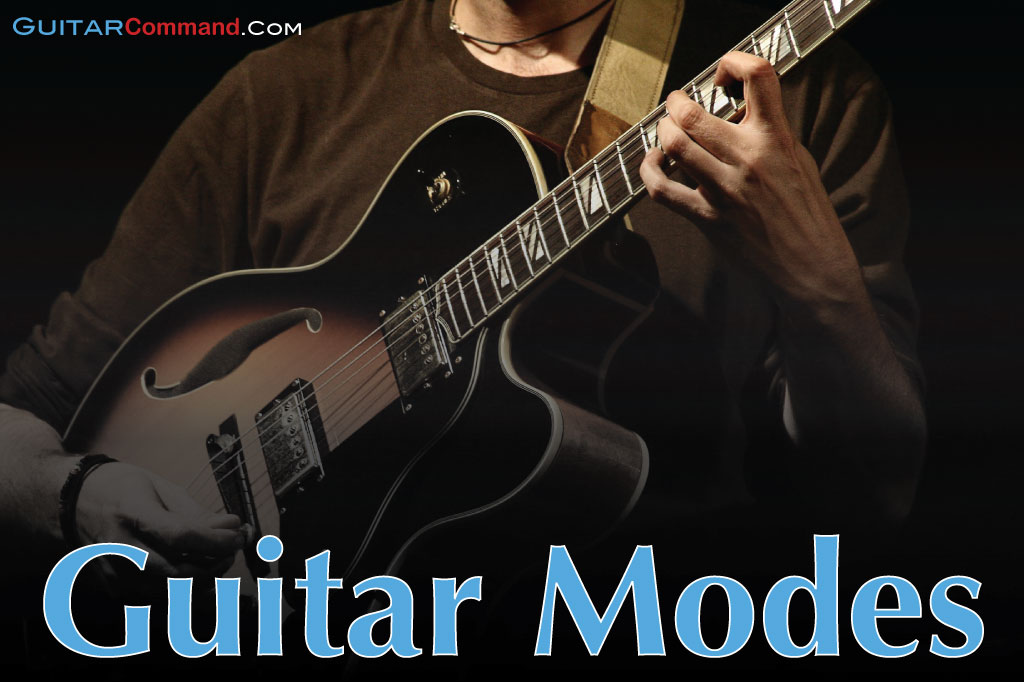This page contains jazz scales guitar notation with tab, diagrams and information on how to use scales in jazz improvisation.
Jazz Guitar
Guitar Modes Tab & Fretboard Diagrams: Complete Lesson – Learn How To Use Modes In Your Solos
Welcome to our complete guide to guitar modes and modal playing. By the end of this page you'll be able to incorporate modes into your own guitar solos and songs.
Modes are widely used in lead guitar improvisation. This page shows you how to construct and play modal scales on the guitar. Scale diagrams and tab are provided, so there's no need for you to be able to read music in order to start experimenting with modes.
Pat Metheny Unity Band Review
Pat Metheny Unity Band review by Guitar Command, June 2012. Guitarist Pat Metheny is one of the biggest names in jazz today. His considerable oeuvre includes projects as diverse as a collaboration with minimalist composer Steve Reich and an album of solo compositions written for Metheny’s own custom-made mechanical ‘Orchestrion’. Prior to ‘Unity Band’, Metheny’s …
Bebop Licks
Bebop licks for guitar, presented in notation and TAB. These licks are based on the dominant form of the bebop scale. The dominant bebop scale is basically a mixolydian scale with an extra passing note inserted between the root and the b7. For example, a G dominant bebop scale contains the notes: G, A, B, …
How To Play Jazz Guitar
Thinking of learning how to play jazz guitar? Get off to the right start with this concise guide that features all of the key concepts in jazz guitar playing. We tell you how playing jazz differs from playing rock and blues. We’ll also share information on jazz guitar playing techniques, jazz standards, comping, substitutions, ii …
How To Use Diminished Scales
This guitar lesson explains how to use diminished scales in improvisation, and includes an example guitar solo plus a backing track so you can solo with diminished scales yourself. For more information on diminished scales, see this page: Diminished Scale Guitar.
Improvisation With Jazz Minor Scale
This is a guitar lesson on how to use the Jazz Minor Scale in improvisation. The jazz minor scale can be used to improvise over minor 6th (m6), minor/major 7th (m/M7) and other minor chords. It produces some unusual melodic flavours, as it contains both major 6th and major 7th tones, which are not found …
Jazz Minor Scale
The jazz minor scale is one of several minor-type scales available to use in improvisation. Depending on which way you want to approach it, it is either the ascending form of the melodic minor scale, or simply a major scale with the third degree flattened.
How To Use Whole Tone Scales
Whole tone scales have an tonally ambiguous sound that can sound quite 'out of place' if used to improvise with in standard rock and pop songs (though you shouldn't let that stop you trying!). Whole tone scales are often used in jazz, and can be used to play over augmented and augmented 7th chords such as G+, or G7+.
Whole Tone Scale Guitar
The whole tone scale produces a tonally ambiguous sound that when played alone can create an 'eerie' or 'ominous' mood. Its use was once frowned upon by strict classical composers, but the scale's distinctive sound can now be heard fairly regularly in classical, film and jazz music.



